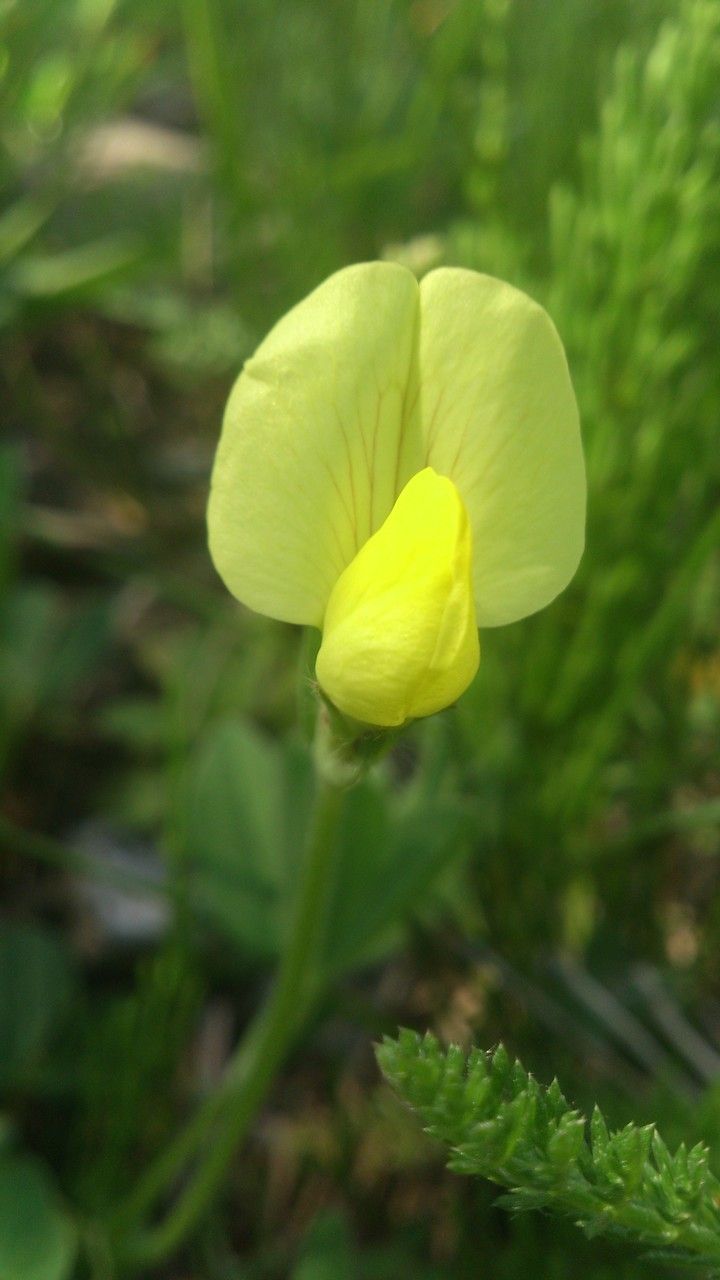Sea Bird's-foot Trefoil
lotus maritimus
Also known as: ["Bird's-foot Trefoil","Sea Trefoil"]
Overview
A coastal perennial herbaceous plant with yellow flowers, adapted to saline environments.
Benefits & Perks
["wildlife attractant (bees, butterflies, birds)","drought tolerant","shade tolerant"]
Botanical Classification
| Phylum: | Magnoliophyta |
| Class: | Magnoliopsida |
| Order: | Fabales |
| Family: | Fabaceae |
| Genus: | Lotus |
| Botanical Name: | Lotus maritimus |
Plant Characteristics
Basic Information
- Category: Flowers
- Suitable Location: coastal gardens or containers near the sea
- Suitable For:
- Is Weed: No
- Allergenicity: low
Environmental Needs
- Climate: {"temperatureRange":"5–25°C"}
- Hardiness: {"zones":"7–10"}
- Misting: rarely required, only if ambient humidity is very low
- Drainage: Fast-draining to prevent waterlogging.
- Soil Type: Well-draining, loamy soil with added organic matter.
Maintenance Level
- Maintenance Level: moderate
- Toughness Level: high
- Pruning Frequency: Annually or as needed to maintain shape and health.
- Pruning Intensity: Moderate; remove up to one-third of old growth if necessary.
Care Details
Ideal Sunlight Coverage:
Bright indirect light for 6–8 hours daily; adjust to partial shade during intense summer months.
Sunlight Tolerance Tips:
Gradually acclimate to stronger light to prevent scorching; provide dappled shade outdoors and rotate indoor plants for even growth.
Care Requirements
Care Difficulty
moderatemoderate
Sunlight
full sun to partial shade
Avoid direct midday sun; use sheer curtains for filtered light; rotate plant weekly.
Watering
every 7–10 days during growing season, reduce in winter
Water thoroughly until it drains from the bottom, avoid letting the plant sit in water, and adjust frequency based on season and growth stage.
Soil
sandy, loamy soil with good drainage
pH: Slightly acidic to neutral (pH 6.0–7.0).
Ensure pots have drainage holes; avoid heavy clay soils; amend with organic matter.
Temperature
Prefers 65–75°F (18–24°C); cooler temperatures (50–60°F or 10–15°C) during dormancy.
Avoid drafts; use a thermometer to monitor; adjust care based on seasonal changes.
Fertilizing
every 4–6 weeks during active growth with balanced liquid fertilizer
Fertilize only when actively growing; flush soil occasionally to prevent salt buildup; avoid over-fertilizing.
Propagation
Methods
Stem cuttings or division of rhizomes.
Step-by-Step Propagation Guide
- Take a healthy cutting, apply hormone (if used), plant in medium, maintain humidity, and wait for roots.
Best Time: Spring or early summer when the plant is actively growing.
Environment
High humidity (70–80%), warm temperatures (70–75°F or 21–24°C), and indirect light.
Medium
Well-draining potting mix with perlite or sand.
Hormone
Optional, but recommended for faster rooting.
Timeline
Roots develop in 3–6 weeks; new growth appears in 2–3 months.
Tools Needed
Pruning shears, rooting hormone, small pots, misting spray bottle.
Quick Tips
Use sterile tools; keep soil consistently moist; provide bottom heat for faster rooting.
Pruning & Repotting
Pruning Guide
Method
Selective cutting of stems just above a leaf node or bud.
Pruning Plan
Remove dead or overgrown stems to encourage bushier growth and improve air circulation.
Tools
Clean pruning shears or scissors.
Checklist
Sanitize tools, prune dead/damaged growth, shape plant, clean up debris.
Repotting Guide
Best Season
Spring, before the active growing season begins.
Pot Size
Choose a pot 1–2 inches larger in diameter than the current one.
Method
Remove plant gently, trim roots if crowded, place in a new pot with fresh soil, and water lightly.
Suggestions
Repot every 2–3 years or when roots outgrow the container to refresh soil and provide space.
Checklist
Check root bound status, prepare new pot, trim roots, use fresh soil, water lightly.
Advanced Care Tips
Watering Mastery
Watering Checklist
Check soil moisture, water deeply, ensure drainage, adjust for season.
How to Apply Water Properly
Water directly at the root zone, ensuring even moisture distribution without saturating the foliage; allow excess water to drain completely to prevent waterlogging.
Watering Schedule Tips
Water deeply once the soil surface feels dry to the touch; reduce frequency in winter to prevent root rot.
Soil Improvement
Add perlite or coarse sand for drainage; incorporate compost for fertility.
Temperature Stress Management
Signs of Temperature Issues
Wilting, leaf drop, or stunted growth in extreme heat; yellowing or browning leaves in cold stress.
Cold Stress
Slows metabolic processes, causing root damage and reduced nutrient uptake in prolonged cold.
Solution: Move to a warmer location, insulate pots, and avoid watering until temperatures rise.
Hot Stress
Leaves may scorch, wilt, or drop; growth may stagnate due to excessive transpiration.
Solution: Provide shade, increase humidity, and water more frequently during heatwaves.
Fertilizing Guide
Fertilizing Checklist
Check growth stage, use diluted fertilizer, apply to moist soil, avoid winter feeding.
Fertilizing Method
Use a balanced liquid fertilizer diluted to half strength every 4–6 weeks during growing season; cease in winter.
Common Problems & Solutions
Toxicity Warning
Cats
Non-toxicLotus maritimus is not known to be toxic to cats. It does not pose a significant risk if ingested or handled by felines.
⚡ Toxic If:
None
Dogs
Non-toxicLotus maritimus is not known to be toxic to dogs. It does not pose a significant risk if ingested or handled by canines.
⚡ Toxic If:
None
Humans
Non-toxicLotus maritimus is not known to exhibit any toxic properties to humans. It is generally considered safe for consumption and handling.
⚡ Toxic If:
None
Frequently Asked Questions
Q: Is Lotus maritimus suitable for coastal gardens?
A: Yes, it is highly adapted to saline and coastal environments.
Q: Does Lotus maritimus attract wildlife?
A: Yes, it attracts bees, butterflies, and birds.
Q: Is Lotus maritimus toxic to pets?
A: No, it is non-toxic to dogs and cats.
Quick Reference
| Family: | Fabaceae |
| Care: | moderate |
| Light: | full sun to partial shade |
| Water: | every 7–10 days during growi |
Get Expert Care Tips
Download the Plantious app for personalized care reminders and plant identification!
Google Play App Store








